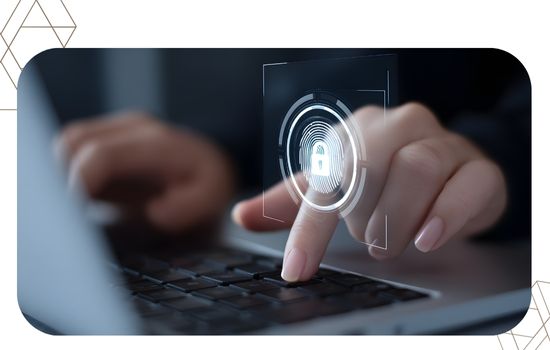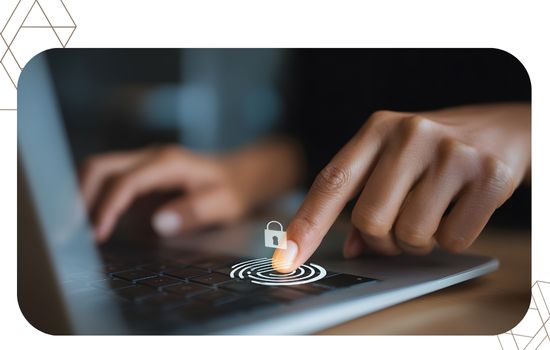Advertisements
The key phrase “Basic tips to protect your online identity"has become indispensable for anyone who surfs daily without noticing how much of their digital actions can be tracked, analyzed, or even exploited."

Before proceeding, it is advisable to review a brief summary:
Why digital identity is so vulnerable, what simple practices strengthen your security, a key official fact, two real-world examples, a useful analogy, a table with essential measures, and answers to frequently asked questions.
Is it worth continuing to ignore something that can impact your financial, professional, and emotional life?
Digital identity as a personal asset
Every move on the internet, from logging in to clicking "like," leaves a trace that's hard to erase.
Advertisements
For years it was believed that privacy depended solely on not sharing sensitive data, but current reality shows the opposite: platforms, advertisers and intruders look for patterns of behavior.
According to the Pew Research Center, 721% of US users say they are concerned about the way companies and governments use their data (2023), a trend that is also replicated in Latin America.
This concern does not arise from nothing.
The volume of information circulating on the network is growing at a rate that exceeds the capacity of most people to protect themselves.
The comparison is best understood with a simple analogy: sailing without protection is equivalent to driving through a gigantic city without locks, without a safe place and without a map.
You can walk around peacefully for a few days, but at some point someone will notice the gaps.
Why attackers are after your data
Cybercriminals are not only interested in bank numbers; they often prefer information considered "harmless," such as date of birth, secondary email address, or approximate location.
These fragments, combined, function like pieces of a puzzle that allow someone to impersonate you, open fake accounts, corrupt access, and even extort people close to you.
The risk increases when the user reuses passwords, uses public networks, or leaves profiles completely open.
The problem isn't the technology itself, but the false sense that these incidents only happen to "someone far away." Nothing could be further from the truth.
Basic tips to protect your online identity
The following are presented Basic tips to protect your online identitystructured in a practical and applicable way.
Although they may seem simple, they form the basis of any personal digital security strategy.
1. Manage passwords as if they were master keys
A strong password presents a significant obstacle for attackers, but there are still those who use obvious combinations.
Avoiding predictable patterns, including varied characters, and changing keys regularly significantly reduces the risk of intrusions.
A reliable password manager is also useful, especially when using multiple different services.
In addition, enabling two-step verification, preferably with authenticator apps, creates an extra layer of protection that is difficult to breach.
2. Be wary of unexpected links and messages
Phishing campaigns have become more sophisticated.
Today, scammers mimic entire corporate identities, including logos, language, and nearly identical email addresses.
Before clicking on any link, it's a good idea to check for details such as spelling errors, overly urgent requests, or requests for information that would never be requested via email.
An illustrative example:
Example 1: A user in Guadalajara received an email that impersonated her bank and, without noticing the suspicious domain, entered her credentials. Minutes later, she detected unknown transactions.
Her case was resolved, but the emotional damage and lost time were considerable.
3. Configure your privacy settings on social networks appropriately.
The popularization of social networks has brought practicality and connections, but it has also opened doors to fraud.
Adjusting who can see your posts, limiting the exposure of personal information, and reviewing the permissions of connected apps reduces third-party access to your data.
Some users prefer private profiles, but even public accounts can operate with caution.
Avoiding posting documents, exact location, or details about children has become a recommended practice by digital security specialists.
4. Keep your devices updated
Updates are not just for improving the design or adding features.
In reality, they correct security flaws that criminals can exploit.
Delaying these packages can leave the system vulnerable for months.
Ideally, you should enable automatic updates on smartphones, laptops, and browsers.
5. Use secure networks, especially when handling sensitive information
Connecting to public Wi-Fi requires caution, as many of these hotspots operate without encryption.
In those cases, browsing, shopping, or accessing bank accounts becomes risky.
When there is no alternative, using a reliable VPN protects the traffic between your device and the server, making it difficult to intercept.
6. Verify the legitimacy of applications and services
Installing unknown programs or downloading applications from outside official stores represents a recurring risk.
This type of file may contain malware capable of recording keystrokes, capturing screen images, or accessing contacts.
Before installing any resource, it is advisable to review the ratings, the developer, and the permissions requested.
To illustrate, consider another case:
Example 2: A young man from Monterrey installed a "performance optimizer" from an unofficial website.
Hours later, his device was sending automated emails and contained password-stealing software. Removing the malware took days.
7. Regularly monitor your information
Searching for your name in search engines, reviewing tagged posts, and monitoring recent access to important accounts can help identify suspicious signals.
A small change in the login pattern may be enough to detect an intrusion attempt before the damage spreads.
8. Be selective with the amount of data you share
Not every platform needs to know your full date of birth, your personal phone number, or your exact address.
Providing only what is necessary limits the impact in the event of a leak.
Many companies request more information than they actually need, and most people accept it out of habit.
Essential table to strengthen your digital security
The following table summarizes direct actions that strengthen your level of protection:
| Recommended action | Main benefit | Suggested frequency |
|---|---|---|
| Update devices and apps | Vulnerability fixes | Weekly |
| Change critical passwords | Reduces unauthorized access | Every 90 days |
| Review privacy settings | Control your public exposure | Monthly |
| Check for suspicious activity and unauthorized access | Detects early intrusions | Fortnightly |
| Avoid public Wi-Fi without a VPN | Protects sensitive data | Whenever possible |

Read more: Cybersecurity in 2025: Main digital threats
The importance of a preventative mindset
A good digital strategy doesn't depend solely on the tools; it requires a proactive approach.
A preventative mindset has become as relevant as technical knowledge itself.
Questioning requests, confirming the origin of messages, and rethinking browsing habits puts the user in a position of advantage.
The focus is on autonomy: when the person understands the risks, they can decide more clearly what data they share, where they browse, and what is really worth accessing.
Conclusion
Adopt the Basic tips to protect your online identity It is not just a recommendation; it has become a personal commitment for those who wish to preserve their integrity in an increasingly interconnected environment.
The practices described here serve as a solid and up-to-date starting point, supported by real data, concrete examples, and guidance widely recommended by specialists.
Digital protection has no secret: it depends on consistency, attention to detail, and continuous updating.
When these elements are combined, identity is strengthened.
Read more: Blockchain beyond cryptocurrencies: real-world applications
Frequently Asked Questions
1. Do I need to pay for tools to protect my identity?
Not always. Many key measures, such as strong passwords, reviewing permissions, or enabling two-step verification, are free.
2. Does a VPN guarantee total privacy?
It helps a lot, but it doesn't provide absolute anonymity. It works as a shield, not invisibility.
3. Is it safe to save passwords in the browser?
It's convenient, although less secure than a specialized administrator.
4. What do I do if I suspect someone has accessed my accounts?
Change your passwords, check linked devices, and enable additional authentication. If there is any unusual financial activity, contact your bank immediately.
5. How often should I check my digital identity?
Ideally, it should be done at least once a month to detect early signs.



